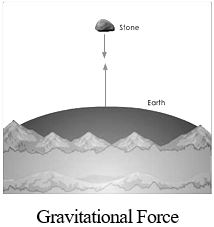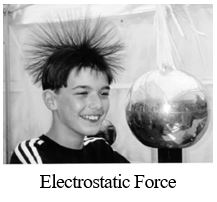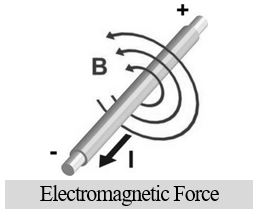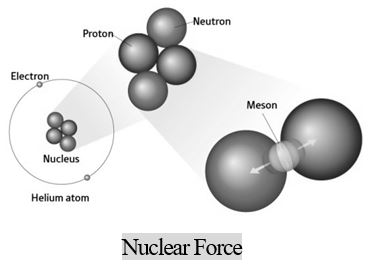1. SCOPE AND EXCITEMENT OF PHYSICS
This word science has its origin in the Latin verb ‘Scientia’ which means ‘to know’. It will be no exaggeration to say that ‘science’ is another word for ‘knowledge’. Our religious scriptures which are full of knowledge can therefore be described, in a sense, books of science.
Science has many disciplines, Physics being one of them. The word Physics has its origin in a Greek word which means ‘nature’. Physics seeks the ultimate truth about the physical world. The main goal of Physics is to seek out and understand the basic laws of nature upon which all physical phenomena depend. With every passing day, Physics has brought to us deeper and deeper levels of understanding of nature. At each successive level, the basic laws or theories not only become simpler but also fewer in number. The history of Physics has confirmed the famous saying of philosopher William of Occam in the fourteenth century that ‘closer we get to the truth, the simpler the basic laws become’.
The subject-matter of Physics is so broad that it runs through all of the Physical sciences. Around the year 1900, there have been many revolutions in Physics. Now, Physics can be conveniently divided into two parts—classical Physics (pre-1900) and modern Physics (post-1900). The classical Physics includes in it the study of mechanics, gravitation, heat, sound, light, electricity and magnetism. The modern Physics includes the study of quantum mechanics, relativity, atoms, nuclei, elementary particles and condensed matter.
Scientific Method
The study of science in general and Physics in particular is based on systematic observation, logical reasoning, model-making and theoretical prediction. All the four steps taken together constitute what we call the ‘scientific method’. It is through the scientific method that we try to arrive at a valid interpretation of the natural phenomena around us.
Theory
The scientific method helps us to describe either a physical phenomenon or the behaviour of a physical system in terms of a limited number of laws. This gives us what we call ‘theory’. Theory should not only be self-consistent but also consistent with all known experimental data. Any discrepancy between theory and experimental data is very crucial, however small the discrepancy may be. It will be interesting to know that small discrepancies have proved very significant in the progress of Physics. A thorough examination of the small discrepancies has given birth to altogether new concepts in Physics.
SCOPE AND EXCITEMENT IN PHYSICS
- Physics deals with vastly diverse disciplines such as mechanics, heat, light, electricity, modern physics, etc.
- The study of ‘mechanics’ helps us to know the forces involved in the flight of a bird, in the walk of a man, in the collision between two microscopic or macroscopic bodies, in the freely falling bodies and so on.
- The study of heat’ helps us to know the rise and fall of temperatures, the working of heat engines, the conductivity of heat and so on. The study of ‘light’ gives us an insight into the properties of lenses, mirrors, etc.
- Electricity helps to understand the basic principles involved in generators and motors.
- The exciting discipline of modern physics takes us into the highly microscopic world of atoms and electrons.
- The first and foremost task in understanding such diverse physical phenomena is to describe qualitatively and not just quantitatively all that we observe.
- Certain laws emerge out of quantitative description.
- These laws help us to understand our observations and to comprehend cause-effect relationships.
- The second task is to distinguish the less important’ from the ‘important’ features of a problem.
- If we can do so effectively, then a given complex problem may appear to be pretty simple.
HYPOTHESIS, AXIOMS & MODELS
One should not think that everything can be proved with physics and mathematics. All physics, and also mathematics, is based on assumptions, each of which is variously called a hypothesis or axiom or postulate, etc. For example, the universal law of gravitation proposed by Newton is an assumption or hypothesis, which he proposed out of his ingenuity. Before him, there were several observations, experiments and data, on the motion of planets around the sun, motion of the moon around the earth, pendulums, bodies falling towards the earth etc. Each of these required a separate explanation, which was more or less qualitative. What the universal law of gravitation says is that, if we assume that any two bodies in the universe attract each other with a force proportional to the product of their masses and inversely proportional to the square of the distance between them, then we can explain all these observations in one stroke. It not only explains these phenomena, it also allows us to predict the results of future experiments.
HYPOTHESIS
A hypothesis is a supposition without assuming that it is true. It would not be fair to ask anybody to prove the universal law of gravitation, because it cannot be proved. It can be verified and substantiated by experiments and observations.
AXIOM AND MODEL
An axiom is a self-evident truth while a model is a theory proposed to explain observed phenomena. But you need not worry at this stage about the nuances in using these words. For example, you will learn about Bohr’s model of hydrogen atom, in which Bohr assumed that an electron in the hydrogen atom follows certain rules (postulates). Why did he do that? There was a large amount of spectroscopic data before him which no other theory could explain. So Bohr said that if we assume that an atom behaves in such a manner, we can explain all these things at once.
Einstein’s special theory of relativity is also based on two postulates, the constancy of the speed of electromagnetic radiation and the validity of physical laws in all inertial frame of reference. It would not be wise to ask somebody to prove that the speed of light in vacuum is constant, independent of the source or observer.
In mathematics too, we need axioms and hypothesis at every stage. Euclid’s statement that parallel lines never meet is a hypothesis. This means that if we assume this statement, we can explain several properties of straight lines and two or three dimensional figures made out of them. But if you don’t assume it, you are free to use a different axiom and get a new geometry, as has indeed happened in the past few centuries and decades.
2. PHYSICS – TECHNOLOGY AND SOCIETY
Physics is an effort at seeking the ultimate truth about the physical world. The physicist believes that mankind will continue to get closer and closer to the ‘ultimate truth’. A major preoccupation of Physicists is the study of elementary particles, their properties and their interactions. Only four fundamental interactions, listed below, have been discovered so far. All the observed forces and interactions in the universe can be broadly based on these interactions.
(i) Gravitational interaction
(ii) Weak interaction
(iii) Electromagnetic interaction
(iv) Nuclear interaction
The interactions vividly bring out the concepts of both ‘a very tiny world’ and ‘a very large world’. Those laws of Physics which rule stars and galaxies also govern elementary particles.
Physics plays a crucial role in technology. The outstanding contributions of Physics to technology are radio engineering, nuclear engineering and electronics. Prior to this, the outstanding contributions were electricity, aviation, aerodynamics and hydrodynamics. If we go back to three hundred years, we shall find the pioneer Italian Physicist Galileo, trying to find out the ways and means to support heavy beams without breaking them.
Physics is the key to the answers of questions involving the behavior of non-living things in nature. What are electrons? What are atoms? What are molecules? How do the Sun and stars produce intense heat and light? Is it possible to create or destroy matter? What holds protons and neutrons together in the nucleus? A number of such questions can be answered by Physics.
This society of ours has become more and more science-oriented. Even those of us who do not plan to become direct doers of science will be better members of society if we develop an understanding of the basic laws of Physics.
3. PHYSICISTS AND THEIR MAJOR CONTRIBUTIONS
| List of Important Nobel Prizes | ||
| Name of Scientist | Year of Award | Contribution for which Nobel Prize is awarded |
| Wilhelm Konrad Roentgen | 1901 | the discovery of X-rays. |
| AH. Becquerel | 1903 | the discovery of spontaneous radioactivity. |
| G.Marconi | 1909 | the contribution to the development of wireless. |
| H.K Onnes | 1913 | the investigations of the properties of matter at low temperatures. |
| Max Planck | 1918 | the discovery of energy quanta |
| Albert Einstein | 1921 | the investigation of the structure of atoms, and of the radiation emanating from them. |
| R.A. Millikan | 1923 | his work on the elementary charge of electricity and on the photoelectric effect. |
| A.H. Compton | 1927 | his discovery of the effect named after him. |
| Louis-Victor de Broglie | 1929 | the discovery of the wave nature of electrons. |
| Sir Chandrasekhara Venkata Raman | 1930 | his work on the scattering of light and for the discovery of effect named after him. |
| Werner Heisenberg | 1932 | the creation of quantum mechanics. |
| James Chadwick | 1935 | the discovery of neutron |
| Victor Franz Hess | 1936 | the discovery of cosmic radiation |
| Enrico Fermi | 1938 | the demonstration of the existence of new radioactive elements. |
| Wolfgang Pauli | 1945 | the discovery of Exclusion principle (Pauli principle) |
| Hideki Yukawa | 1949 | the prediction of the existence of mesons on the basis of theoretical work on nuclear forces. |
| William Shockley, John Bardeen, W.H. Brattain | 1956 | their researches on semi-conductors and their discovery of the transistor effect. |
| H.A. Bethe | 1967 | his contribution to the theory of nuclear reaction, especially his discoveries concerning the energy production in stars. |
| Dennis Gabor | 1971 | the discovery of the principle of holography. |
| J. Bardeen, L.N. Cooper, J.R. Schrieffer | 1972 | the development of a theory of superconductivity. |
| S.L. Glashow, Abdus Salam, S. Weinberg | 1979 | their unified model of the action of the weak and electromagnetic forces and for their prediction of the existence of neutral currents. |
| Ernst Ruska | 1986 | his invention of the electron microscope. |
| Karl Alex Miiller, J.G. Bednorz | 1987 | their discovery of a new class of superconductors |
| Pierre-Gilles de Gennes | 1991 | discoveries about the ordering of molecules in substances such as liquid crystals, superconductors and polymers. |
| List of Important Discoveries | |||
| Name of Discoverer | Nationality | Contribution/Discovery | Year |
| Copernicus | Poland | Sun as centre of solar-system | 1543 |
| Galileo | Italy | Law of Falling bodies | 1590 |
| Hans Lippershey | Netherlands | Telescope | 1608 |
| Johannes Kepler | Germany | Laws of Planetary Motion | 1609-1619 |
| John Napier | Scotland | Logarithms | 1614 |
| E. Torricelli | Italy | Barometer | 1643 |
| Dennis Papin | France | Pressure Cooker | 1675 |
| Issac Newton | England | Laws of gravitation and Motion | 1687 |
| Thomas Newcomen | England | Steam Engine | 1712 |
| G. Fahrenheit | Germany | Mercury thermometer | 1714 |
| Benjamin Franklin | USA | Lightning conductor | 1752 |
| James Watt | Scotland | Condensing Steam Engine | 1765 |
| C.A. Vatta | Italy | Electric Battery | 1800 |
| K.V. Sauerbronn | Germany | Bicycle | 1816 |
| William Sturgeon | England | Electromagnet | 1825 |
| Michael Faraday | England | Dynamo and Law of Electromagnetic Induction | 1831 |
| Elisha Otis | USA | Passenger lift | 1853 |
| F. Caree | France | Refrigerator | 1858 |
| E. Lenoir | France | Internal combustion Engine | 1859 |
| Graham Bell | Scotland | Telephone | 1876 |
| David Edward Hughes | England/USA | Microphone | 1878 |
| James Dewar | Scotland | Vacuum Flask | 1885 |
| William Stanley | USA | Electric Transformer | 1885 |
| H. Hertz | Germany | Electromagnetic waves | 1886 |
| G.Marconi | Italy | Wireless | 1895 |
| W. Roentgen | Germany | X-rays | 1895 |
| Antoine Becquerel | France | Radioactivity | 1896 |
| Rudolf Diesel | Germany | Diesel Engine | 1897 |
| Pierre and Marie Curie | France | Radium | 1898 |
| Max Planck | Germany | Quantum theory | 1900 |
| Wilbur Orville Wright | USA | Aeroplane | 1903 |
| John Fleming | England | Diode | 1904 |
| Lee De Forest | USA | Triode | 1906 |
| Albert Einstein | Switzerland | General theory of Relativity | 1915 |
| H.C. Oersted | Denmark | Electro-magnetism | 1920 |
| John Baird | Scotland | Television | 1925 |
| Robbert H. Goddard | USA | Rocket (Liquid Fuel) | 1926 |
| James Chadwick | England | Neutron | 1932 |
| J. Presper Eckert and John W. Mauchly | USA | Electronic Computer | 1946 |
| John Bardeen, W. Brattain, W. Shockley | USA | Transistor | 1948 |
| Theodore Mainmann | USA | Laser | 1960 |
| Link between Technology and Physics | ||
| SN | Technology | Scientific Principles |
| 1 | Aeroplane | Bernoulli’s principle in fluid dynamics |
| 2 | Bose-Einstein condensate | Trapping and cooling of atoms by laser beams and magnetic fields |
| 3 | Computers | Digital logic |
| 4 | Steam engine | Laws of thermodynamics |
| 5 | Nuclear reactor | Controlled nuclear fission |
| 6 | Radio and Television | Generation,propagation and detection of electromagnetic waves |
| 7 | Lasers | Light amplification by stimulated emission of radiation |
| 8 | Production of ultra-high magnetic fields | Superconductivity |
| 9 | Rocket propulsion | Newton’s laws of motion |
| 10 | Electric generator | Faraday’s laws of electromagnetic induction |
| 11 | Hydroelectric power | Conversion of gravitational potential energy into electrical energy |
| 12 | Particle accelerators | Motion of charged particles in electromagnetic fields |
| 13 | SONAR | Reflection of ultrasonic waves |
| 14 | Optical fibres | Total internal reflection of light |
| 15 | Non-reflecting coatings | Thin film optical interference |
| 16 | Electron microscope | Wave nature of electrons |
| 17 | Photocell | Photoelectric effect |
| 18 | Fusion test reactor (Tokamak) | Magnetic confinement of plasma |
| 19 | Giant Metrewave RadioTelescope ( GMRT) | Detection of cosmic radio waves |
| 20 | ||
4. FUNDAMENTAL FORCES AND NATURE OF PHYSICAL LAWS
BASIC FORCES IN NATURE
The laws for ‘derived’ forces (such as spring force, friction, Van der Waals force) are clearly not independent of the laws of fundamental forces in nature. The origin of these derived forces is, however, very complex.
At the present stage of our understanding, we believe there are four fundamental forces in nature, which are described in brief here:
There are four basic forces in nature-gravitational force, electromagnetic force, nuclear force and the weak force.
1. Gravitational Force
It is the force of attraction between any two bodies in the universe.

This force is directly proportional to the product of the masses of the interacting bodies and inversely proportional to the square of the distance between them. This is Newton’s law of gravitation. In the case of light bodies, the gravitational force is small. But in the case of massive bodies, the gravitational force is considerable. As an illustration, it is essentially because of the gravitational force that the planets go round the Sun, the stars are born and the galaxies are formed. In fact, the structure and evolution of the whole universe is governed by gravitation.
2. Electrostatic Force

According to Coulomb’s law of electrostatics, the electrostatic force is directly proportional to the product of the charges and inversely proportional to the square of the distance between them.
Electric charges are classified as positive and negative (which is positive and which negative, is a matter of convention). When a glass rod is rubbed with a silk cloth, the glass rod becomes positively charged. Similarly, when a rubber rod is rubbed with fur, the rod acquires negative charge. Among the elementary particles, protons carry positive charge while the electrons are negatively charged. The electrostatic force is attractive between opposite charges and repulsive between like charges.
3. Magnetic Force
The magnetic property of lodestone has been known since ancient times. Similarly, the use of a magnetic compass has been in vogue for a very long time. Its needle, which is a small magnet, is acted upon by the magnetic field of the Earth. This is an example of magnetic force in action. The law of force between two magnets or the law of force on a magnet placed in a magnetic field are known. So, these forces can be readily calculated.

4. Electromagnetic Force
Although we speak of electric and magnetic forces and their effects as different phenomena, they are closely interrelated. As an example, an electric charge moving in a magnetic field experiences a force. Also it is the moving charges that produce magnetic field. Therefore, we speak of electromagnetism—the combination of electricity and magnetism. Electric and magnetic forces are considered as the two facets of the general electromagnetic force.

5. Nuclear Force
Within the nucleus, each nucleon, whether a proton or a neutron, is attracted by other nucleons with gravitational force. This force, as can be calculated by using Newton’s law of gravitation, is of the order of 10–38 N. In addition to the gravitational force, an electrostatic force of repulsion is present between protons which are not stabilised by a compensating negative charge. This force, as can be calculated from Coulomb’s law, is of order of 10–2 N. Thus, the repulsive force between the nucleons is 1036 times greater than the attractive force between nucleons.

Thus, the natural conclusion is that the nucleus is not a stable entity. But, for stability, nature has provided another force, known as strong interaction which binds together the nucleons (protons and neutrons) in a nucleus. Although much stronger than the Coulomb force at sufficiently short distances, the nature of these nuclear forces is only partly understood. We shall discuss some of the facts which are known about them.
An important and distinctive property of the nuclear forces is their short range. For distances greater than about 10–15 m or 1 fermi (= 1 fm), this nuclear force quickly becomes negligibly small. But at shorter distances, it dominates over all other interactions between nucleons. It is an exceedingly complex type of interaction, attractive down to about 0.4 fm and strongly repulsive for still smaller separations. It is, in fact a non-central force that is, in contrast to the gravitational and Coulomb interactions, it is not directed along the line joining the centres of the interacting particles.
Present evidence indicates that the nuclear force between two protons is the same as the force between two neutrons and that the force may be equal to the force between a neutron and a proton. This shows the charge-independent nature of these forces.
6. Weak Force
Another type of force associated with nuclear interactions is also known to exist but is not very well understood as yet. It is called the weak interaction. The range of this force is even less than that of the strong interactions and its strength is estimated to be only about 1015 as great as the other. This weak interaction is important only for certain types of nuclear processes, such as radioactive beta decay. In this process, the nucleus emits an electron and another particle called the neutrino. The electrons and the neutrino interact with each other exclusively through the weak force. The weak force acts between any two elementary particles.
The nuclear forces have really no place in a discussion of Newtonian mechanics. Indeed, the very use of the word “force” in connection with nuclear interactions is open to question for any statement about the force between two nuclear particles is at best a remote inference. We cannot cite any direct observations comparable to those of Cavendish and Coulomb for gravitational and electrical forces. Moreover, the subject of nuclear forces, like everything else in subatomic Physics, requires the ideas and techniques of quantum mechanics, which is a theory that has almost no use for the concept of force as such. Thus when we talk of classical or Newtonian mechanics, we are really concerned with situations in which the only relevant kinds of interactions are electromagnetic or gravitational.
| Strong | Electromagnetic | Weak | Gravitational |
| 102 | 1 | KT12 | 10–36 |
CONSERVATION LAWS
In any physical phenomenon governed by different forces, several quantities may change with time. However, some physical quantities remain constant in time. These quantities are the ‘conserved quantities’ of nature. This remarkable fact is the basis of many laws called conservation laws.
The conservation laws have a deep connection with the symmetries of nature.
The basic conservation laws are stronger than other laws. This is because anything that happens must not be forbidden by a conservation law.
1. Law of Conservation of Linear Momentum
If no external force acts on a system of colliding objects, then the total momentum of the objects, in a given direction, before collision is equal to the total momentum of objects in the same direction after collision.
2. Law of Conservation of Mass-Energy
When a body falls freely in vacuum under the effect of Earth’s gravity, the total mechanical energy (sum of kinetic and potential energy) remains constant. Both the kinetic energy of the body and its potential energy change continuously with time. However, the sum remains fixed. In this illustration, the force of gravity is involved. The force of gravity is a conservative force. Note that the law of conservation of energy is not restricted for a conservative force.
The general law of conservation of energy is true for all forces. It is also true for any kind of transformation between different forms of energy. This law is valid for all domains of nature, from the microscopic to the macroscopic. It is applied in the analysis of atomic, nuclear and elementary particle processes. The total energy of the universe (the most ideal isolated system possible) remains constant.
Until the advent of Einstein’s theory of relativity, the law of conservation of mass was regarded as a basic conservation law of nature. This is because matter was thought to be indestructible. It was (and still is) an important principle used in the analysis of chemical reactions. The total mass of the reactants in a chemical reaction is the same as the total mass of the products in a chemical reaction.
Now-a-days, mass and energy are regarded as inter-convertible. So, we have law of conservation of mass-energy. It may be broadly stated as follows.
The sum total of mass and energy in the universe remains constant.
3. Law of conservation of angular momentum
This law corresponds to the law of conservation of linear momentum. According to this law, if no external torque acts upon a system, then the angular momentum of the system remains constant.
4. Law of conservation of charge.
The total electric charge of an isolated system remains constant.
5. Law of conservation of baryons
The nucleons and hyperons have baryon number + 1. Their anti-particles have baryon number – 1. This law says that total baryon number must remain unchanged.
6. Law of conservation of leptons
This law may be thought of as the light-particle counterpart of law 5. The leptons ve and e–1 have electron lepton number +1 and their antiparticles have lepton number –1. According to this law, the total electron lepton number must remain unchanged before and after any interaction. There is a corresponding, but independent, law of conservation of muon leptons (and of tau leptons).
7. Law of charge independence (also called conservation of isotopic spin)
This law holds only for the strong interactions. Because of the electromagnetic interactions, its predictions are only accurate to within about 1%. Charge-independence makes such predictions as that the proton-proton force should be the same as the proton-neutron force.
8. Law of conservation of strangeness (associated production of strange particles)
This law holds for all strong and electromagnetic interactions but not for the weak interactions. It is because of this law that hyperons and K mesons decay slowly enough for us to see their tracks.
9. Law of antiparticle symmetry
This law holds also for all strong and electromagnetic interactions but not for the weak interactions.
10. Law of conservation of parity
This law also holds for all strong and electromagnetic interactions but not for the weak interactions.
11. Law of overall antiparticle-parity symmetry (cp in variance)
This law says that if all the particles in the mirror image of any experiment are changed to their corresponding antiparticles, this new experiment is also a legitimate experiment. This law appears to hold for strong and electromagnetic interactions, but a small violation has been observed in the decay of the neutral K meson.
12. Law of CPT invariance
Overall antiparticle-parity-time reversal symmetry. This law says that if all the particles in the mirror image of any experiment are changed to their corresponding antiparticles, and all velocities and rotations are reversed, the new experiment so obtained is a legitimate experiment. This law is believed to hold for all interactions.
13. Law of time reversal invariance
This law says that if the velocities and rotations of all the particles of any experiment are reversed, this new experiment is also a legitimate experiment. It appears to hold for strong and electromagnetic interactions, but must be slightly violated for the weak interaction because CP is slightly violated and CPT is not.
14. Law Of Conservation Of Charm
This law is similar to the law of conservation of strangeness. Just as some hadrons can have a quantum number called strangeness, some other hadrons have a quantum number called charm. This law is postulated to hold for the strong and electromagnetic interactions, but not for the weak interactions. There is a corresponding conservation of “beauty” for those hadrons that have the b quark as a constituent.
BUILDING BLOCKS OF MATTER
Leptons And Quarks
Leptons and quarks are the basic building blocks of matter, i.e., they are seen as the “elementary particles”. There are six leptons in the present structure, the electron, muon, and tau particles and their associated neutrinos. The different varieties of the elementary particles are commonly called “flavors”, and the neutrinos here are considered to have distinctly different flavor.
Important principles for all particle interactions are the conservation of lepton number and the the conservation of baryon number.
Now that we have experimental evidence for six leptons, a relevant question is “Are there more?”. The present standard model assumes that there are no more than three generations. One of the pieces of experimental evidence for that is the measured hydrogen/helium abundance ratio in the universe. When the process of nucleosynthesis from the big bang is modeled, the number of types of neutrinos affects the abundance of helium. The observed abundance agrees with three types of neutrinos

Baryons
Baryons are heavy subatomic particles, including protons and neutrons. As all compounds in the universe contain these particles, a process which eliminates baryons wouldn’t leave much behind. We can assume that the baryon sweep refers to a specific type of heavy subatomic particle created by the subspace field of warp drive, rather than the entire family of them. A baryon sweep would thus indeed be dangerous to organic matter, for the reason stated above.








